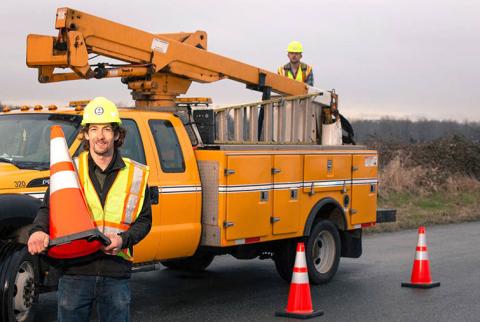Whenever employees along the roadside, they’re in danger of being struck by passing vehicles—and employers are responsible for their safety. That includes many local governments whose Public Works staff are sometimes on the roadside. WorkSafeBC has launched a new resource at ConeZoneBC.com to help employers manage their responsibilities.
Whenever employees work on or along the roadside, they’re in danger of being struck by passing vehicles.
Working at the side of a road for any reason and for any amount of time means they’re considered roadside workers—and that means their employers have specific responsibilities for their safety. This includes meeting revised traffic control regulations that require a work zone risk assessment.
What counts as roadside work:
Municipal employees may work along the road full-time, part-time, or only occasionally. Public Works crews are the most obvious example. But a worker who pulls over to the side of the road to secure a load is also doing roadside work.
What it means for your municipality:
When you have roadside workers the law requires you to comply with Part 18 of WorkSafeBC’s Occupational Health and Safety Regulation. Its traffic control requirements were revised in December 2021. They require you to:
- Do a risk assessment of your work zones: If the work is planned, such as for scheduled work, the assessment needs to be done in advance. If the work is unplanned, such as for an emergency repair, the worker needs to carry out the assessment before getting out of their vehicle.
- Identify the potential hazards: Every work zone has a unique set of hazards. Common ones for municipal workers include speeding or distracted drivers, congested roads, poor sight lines, and poor weather or road conditions.
- Take steps to protect workers: The risk assessment will determine what traffic control needs to be in place. Make sure the order of controls is followed.
- Ensure workers know the hazards: Workers need to know how to protect themselves through job-specific training, education, and supervision. Crews need to know how to identify hazards and assess risks. They also need to know and follow employer policies and procedures to help keep safe. Make sure new employees get an orientation and give veteran crews regular refreshers.
Cone Zone is a provincial initiative supported by the Work Zone Safety Alliance and managed by Road Safety at Work.

